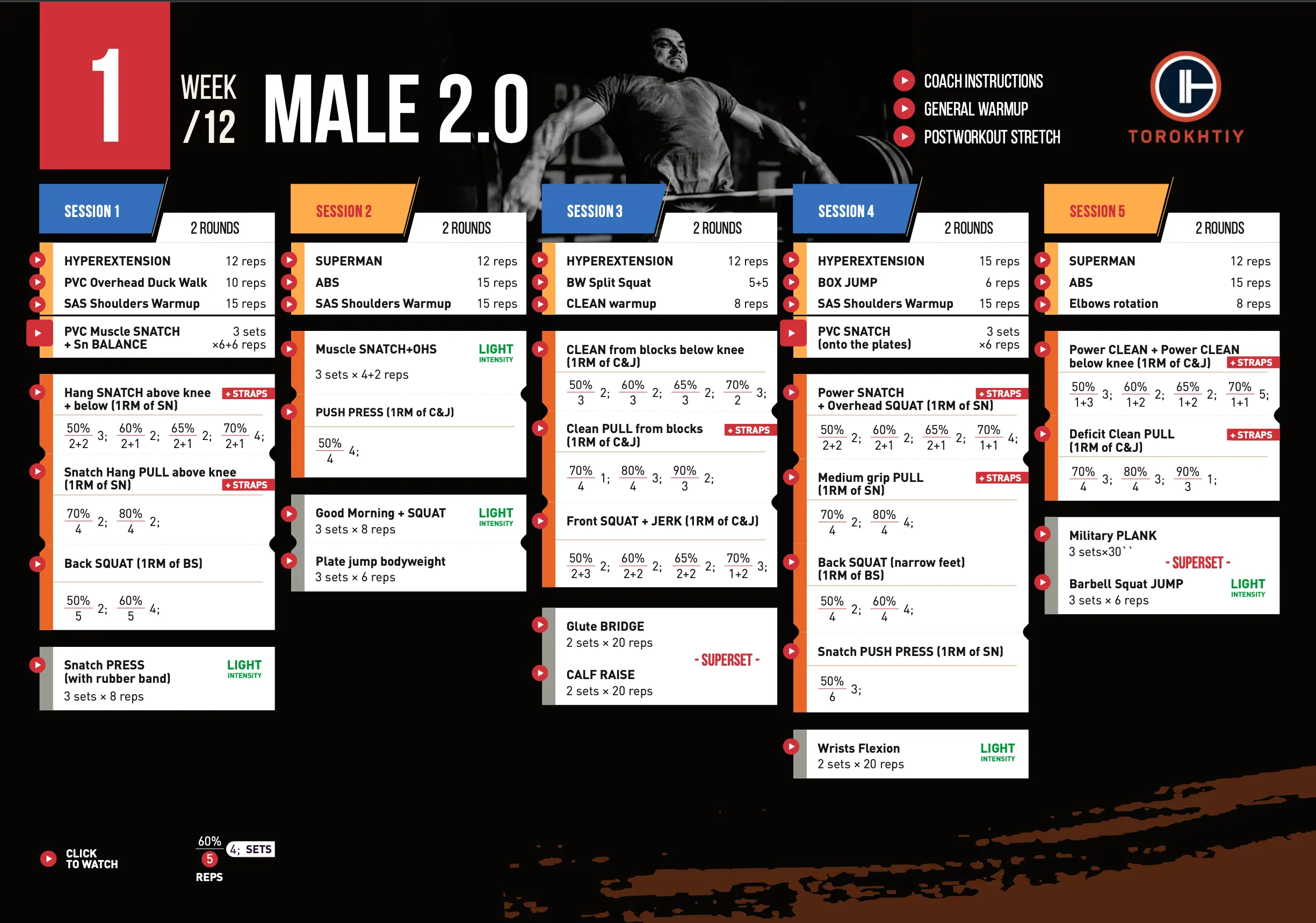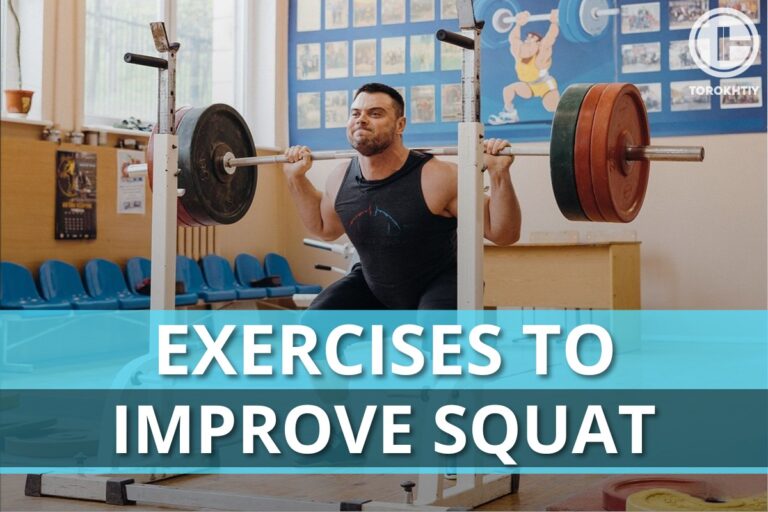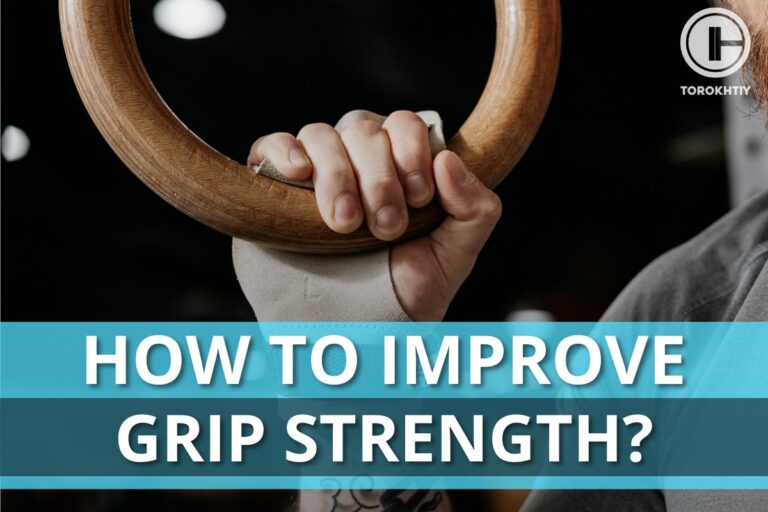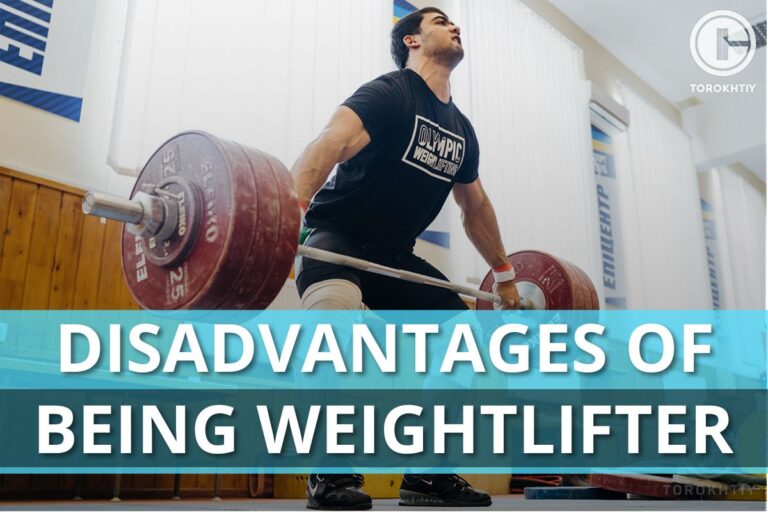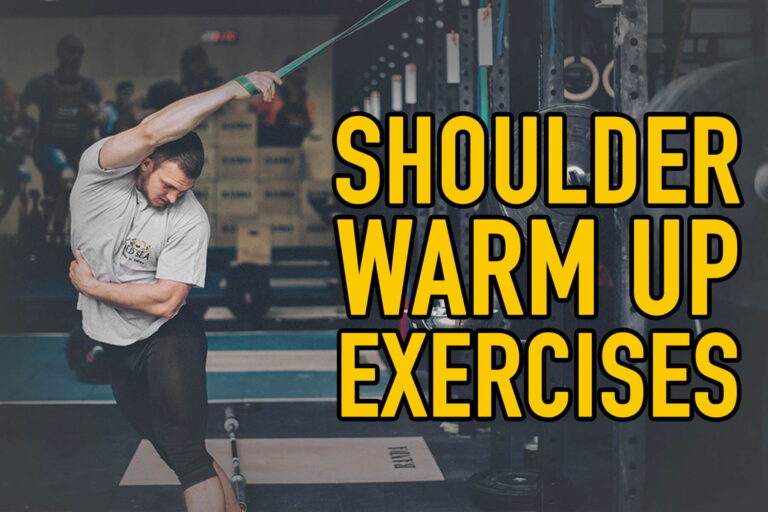Flexibility, Mobility & Weightlifting
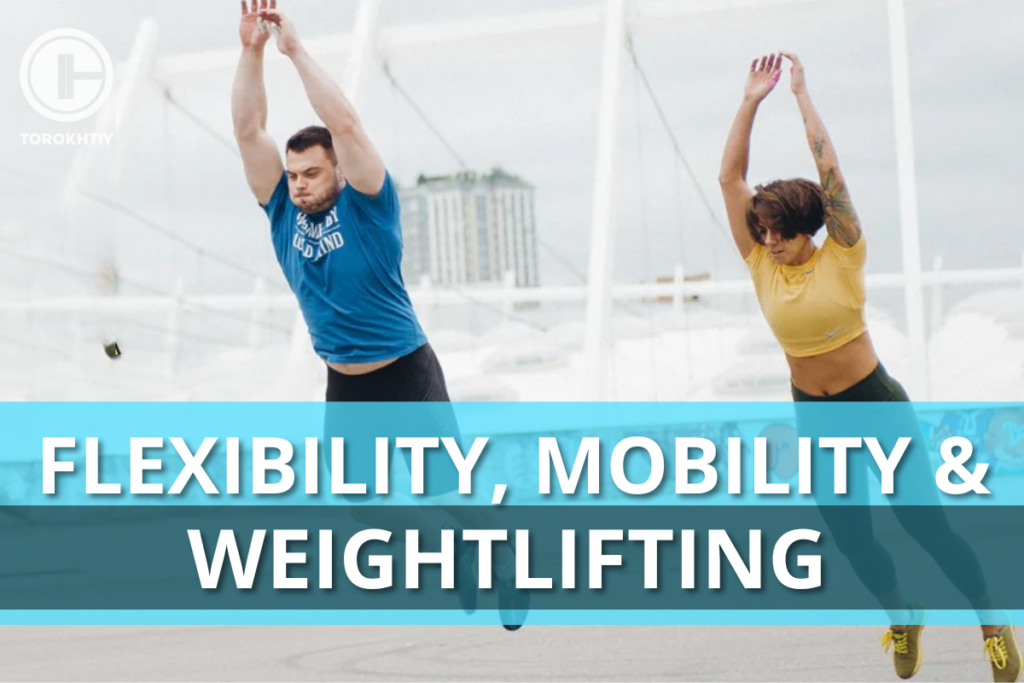
A common myth is that weightlifters only need strength and the more they have it, the more successful they can become. Yes, strength is necessary, but realizing power potential in weightlifting is possible only in combination with high speed, coordination, mobility, and flexibility. Read about how mobility and flexibility are important in weightlifting in this article.
It seems to me that everyone who trains wants to achieve results without injuries, to feel good, and stay healthy as long as possible. This is quite achievable, you just need to remember that, along with other physical qualities, you need to work on mobility and flexibility, develop them consciously, taking into account your personal characteristics.
A common myth is that weightlifters only need strength and the more they have it, the more successful they can become. Yes, strength is necessary, but realizing power potential in weightlifting is possible only in combination with high speed, coordination, mobility, and flexibility.
Even the strongest athlete will not be able to perform a snatch technically correctly and quickly if his joints do not have the necessary range of motion, and the muscles are not elastic enough.
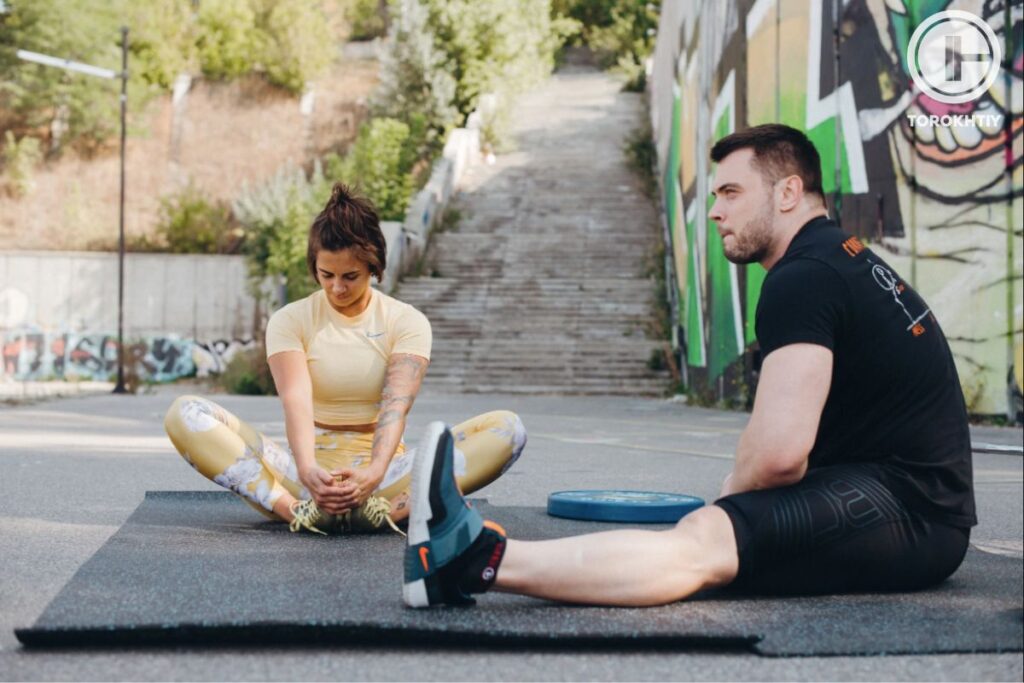
A bit of theory. Flexibility is the ability to move in a joint or group of joints with full amplitude. It can be demonstrated in two ways: in motion (dynamically) or without motion (statically). And already in statics – actively or passively. Active flexibility is the ability to perform stretching due to the tension of the muscles of the antagonists. For example, to stretch the chest muscles, you need to move your arms to the sides and, activating your back muscles, bring your shoulder blades together.
In accordance with this, dynamic and static stretching techniques are determined. Dynamic stretching: active springy movements, fast swings with maximum amplitudes at a fast pace, the purpose of which is to bring the motor skills into the working tone and give the elasticity necessary for explosive work. It is advisable to apply this type of flexibility after a full warm-up and pre-workout, as well as during morning exercises. The recommended number of repetitions in a single movement is 8-30 reps.
Static stretching: holding certain positions for 30 seconds or more, the purpose of which is to relax the musculoskeletal system, stretch muscle fibers, and stop muscle spasms. It is important to learn how to properly perform static stretching. In order for the muscle to react correctly, it is necessary to breathe deeply and evenly, as well as to apply optimal pressure on the muscle area or joint. If we use the pain scale from 1 to 10, then the pressure should be about 6.5. Otherwise, the muscle reflexively spasms, saving itself from excessive pain or possible tear. This type of stretching is recommended after training, before bed, and on rest days as an additional recovery workout.
Flexibility is not something general but is specific to a particular joint or set of joints. Being flexible in one particular area or joint does not necessarily imply being flexible in another. Simply put, the ability to easily sit overhead with a snatch grip does not at all guarantee that everything will be as easy in the clean grip, although both actions are very similar.
Flexibility and mobility depend on external and internal factors. The internal ones are set genetically, therefore, they can only be influenced within the individual framework, taking into account: the size and shape of the bones, the degree of conformity of the articular surfaces, the structure of muscles and ligaments.
In other words, no matter how much you want to turn your elbows in the other direction, it is unlikely to be safe, because this is how the elbow joint works.
As for external factors, many of them are influenced, and this can be used to work more efficiently with flexibility.
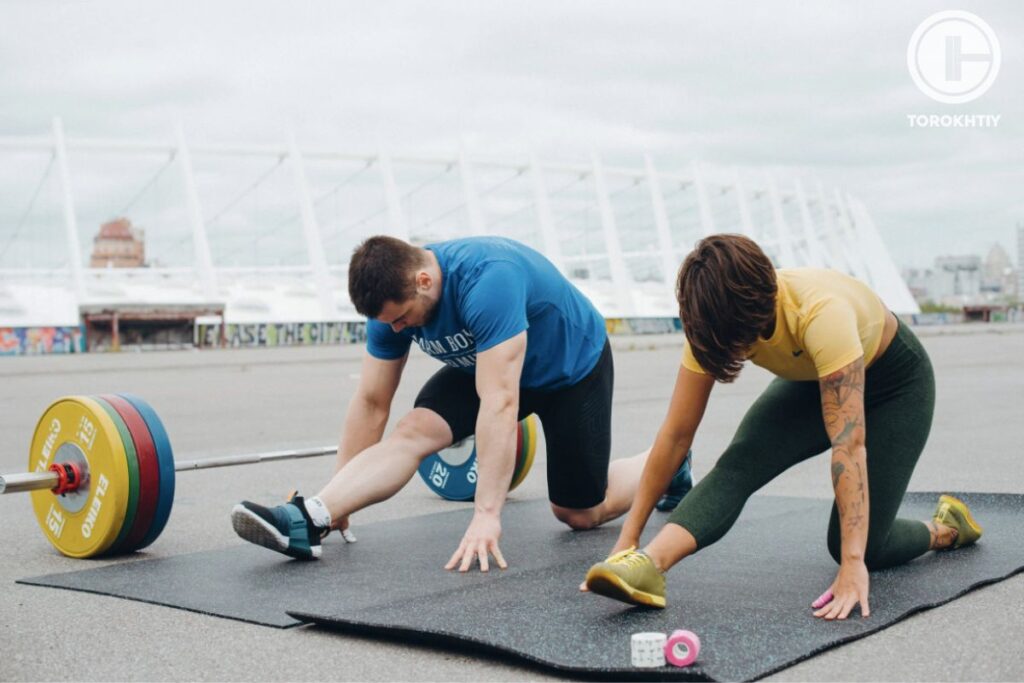
Let’s start with external factors that are easier to influence:
- Room temperature where training takes place. It should be borne in mind that stretching is easier at higher temperatures.
- Time of the day. Most people find it easier to be flexible in the middle of the day. The optimal time is from 14:30 to 16:00.
- Age. Teens are generally more flexible than adults. With age, the chemical composition of bones and connective tissue changes, and micro-tears in the muscles are replaced by connective tissue, which is less extensible. This reduces flexibility, but regular stretching can counteract them. In addition, the flexibility of an adult who regularly stretches can be significantly better than his flexibility at an earlier age when he was not exercising.
- Gender. As a rule, women are more flexible than men, because their connective tissue contains more elastin fibers.
- Gear. It is worth choosing clothes that will not restrict the movement.
- Stage of joint recovery after injury. It should be borne in mind that a joint that has been injured will show a lower range of motion than a healthy one.
- The level of general fitness. The higher the level of general fitness, the better the flexibility. This is due to both the degree of ordering of muscle fibers and the training of reflexes. This is especially felt when you return to training after a break – you feel that you have turned into a log.
Internal factors of flexibility:
- Joint type. Some joints are structurally limited in mobility: the elbow and knee joints. It is important to remember that the purpose of stretching is not to increase mobility at any cost but to increase mobility to normal while maintaining stability. Joints such as the knee, elbow, chest, and cervical require more stability. Shoulder, hip, ankle, wrist, thoracic spine – mobility.
- The degree of conformity of the articular surfaces. It is determined by the structure of the bones and the shape of the joints. This parameter is purely genetic. It cannot be changed, but it is important to consider in order to determine the individual rate of joint mobility. Attempts to exceed it will lead to injury. This issue is often discussed when comparing the mechanics of movement and angles of Asian and European athletes: it is the differences in the position of the body in the deep squat that show the genetic features of the structure of the hip joints.
- Bone structure. The size, shape, and chemical composition of bones are also genetically determined. With age, the ratio of organic and inorganic elements in bone changes. They remain firm but become less elastic. As a result, bones become more fragile. You can counteract this with strength training.
- The elasticity of muscle tissue is mainly set genetically and slightly depends on your fitness level.
- Elasticity of tendons and ligaments. Tendons attach muscles to bones. They practically do not lend themselves to stretching, their length is determined genetically. The ligaments are much more elastic. Their main task is to provide joint stability, so they should not be stretched. Fasciae cover organs, blood vessels, nerves, penetrate muscles, and maintain the overall stability of the body. It is possible and necessary to influence them using myofascial release methods.
- Skin elasticity. Limits flexibility slightly. However, it is worth remembering that its damage leads to the replacement of the epidermis with scar tissue, which is not so elastic. If a person who trains flexibility has recently encountered injury, surgery, then this factor is worth considering. It is better to postpone stretching in the area of damage.
🔻12-Week Olympic Weightlifting Program by Oleksiy Torokhtiy
Transform your strength and technique with our 12-week Olympic Lifting Program, made up of 5 sessions per week.
It is designed by Olympic Champion for athletes who are looking to set new personal records safely in Snatch or Clean & Jerk.
Program details:
- 12 weeks + 2 bonus weeks
- 45-120 minutes per session
- 50+ specific exercises/98 video instructions
- Primary focus on Olympics Lifts
- Full access to all training content
- Weekly video coach instructions
Start now and boost your weightlifting results!
Flexibility allows us to move safely and comfortably. It should be trained consciously, taking into account individual characteristics, innate parameters, and external conditions. Active flexibility is harder to develop than passive flexibility not only does active flexibility require passive flexibility in order to assume an initial extended position, it also requires muscle strength to be able to hold and maintain that position. But, according to research results, it is more closely associated with improving athletic performance. You need to pay attention to the fact that some joints need more mobility than stability, while others – on the contrary. Proper stretching is a combination of agility and stability in the right proportion.
You might be interested in:
Why Trust Us?
With over 20 years in Olympic Weightlifting, our team does its best to provide the audience with ultimate support and meet the needs and requirements of advanced athletes and professional lifters, as well as people who strive to open new opportunities and develop their physical capabilities with us.
By trusting the recommendations of our certified experts in coaching, nutrition, dietology, and sports training programming, as well as scientific consultants, and physiotherapists, we provide you with thorough, well-considered, and scientifically proven content. All the information given in the articles concerning workout programming, separate exercises, and athletic performance, in general, is based on verified data. We ensure that you can rely on our professionals’ pieces of advice and recommendations that can be treated as personalized ones which will benefit you and fully meet your needs.
The product testing process is described in more detail here
Author: Sergii Putsov
Head of Sport Science, PhD
Best Results: Snatch – 165 kg,
C&J – 200 kg
Sergii Putsov, Ph.D., is a former professional weightlifter and National team member, achieving multiple medals in the 94 kg weight category at national competitions. With a Master’s degree in “Olympic & Professional Sport Training” and a Sport Science Ph.D. from the International Olympic Academy, Greece, Sergii now leads as the Head of Sport Science. He specializes in designing training programs, writing insightful blog articles, providing live commentary at international weightlifting events, and conducting educational seminars worldwide alongside Olympic weightlifting expert Oleksiy Torokhtiy.

